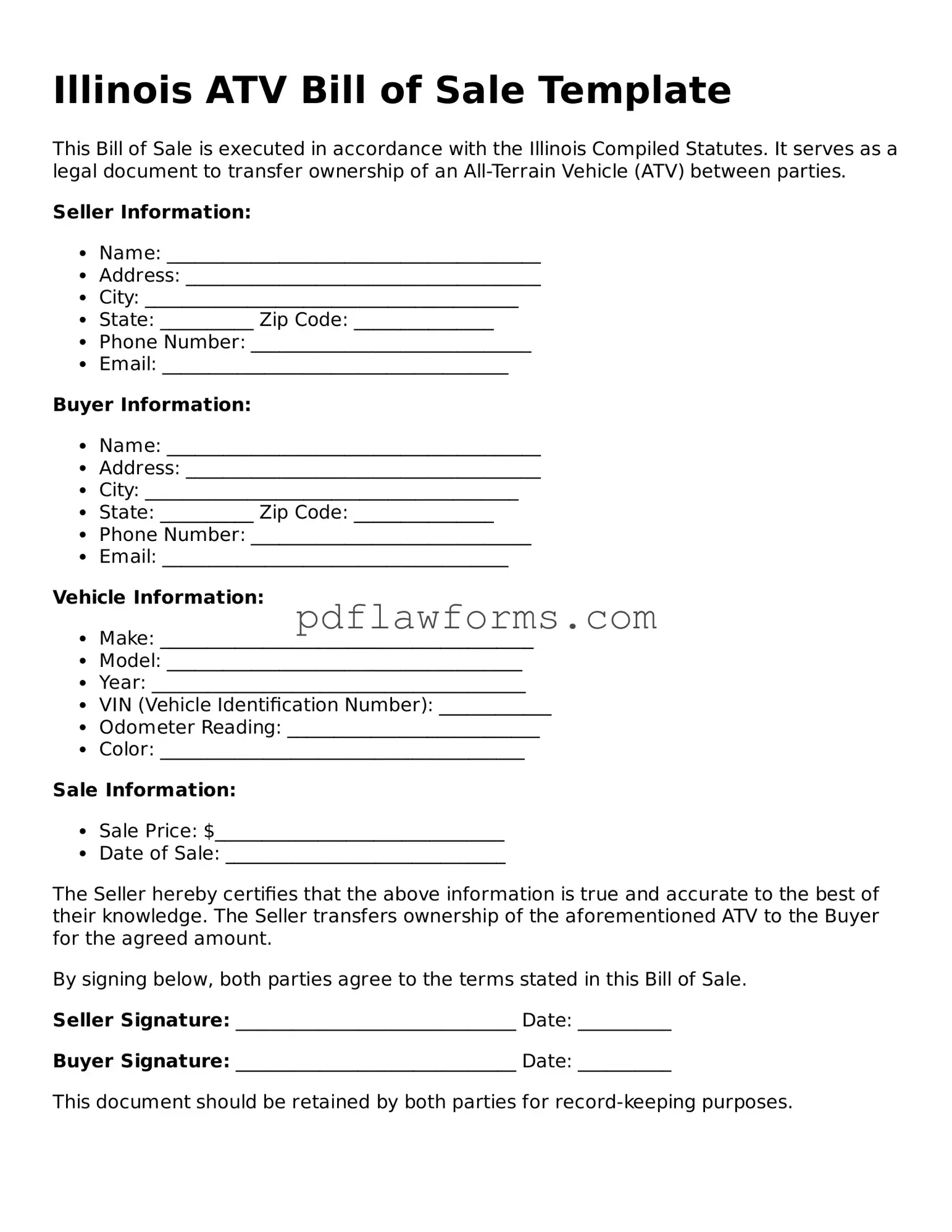When completing the Illinois ATV Bill of Sale form, individuals often encounter several common mistakes that can lead to complications in the sale process. One prevalent error is the omission of essential information. Buyers and sellers must ensure that all required fields are filled out accurately. Missing details such as the Vehicle Identification Number (VIN), the make, model, and year of the ATV can create confusion and may even hinder the registration process.
Another frequent mistake involves the incorrect listing of the purchase price. It is crucial to accurately reflect the agreed-upon amount in the form. If the price is misrepresented, it can raise questions during tax assessments or when the new owner attempts to register the vehicle. Additionally, failing to include the date of sale can lead to disputes regarding ownership and the timeline of the transaction.
People often overlook the importance of signatures. Both the seller and the buyer must sign the document for it to be legally binding. A common oversight is having only one party sign the form, which can invalidate the sale. Furthermore, not providing printed names beneath signatures can create ambiguity about who is involved in the transaction.
Another mistake is neglecting to keep a copy of the completed Bill of Sale. After the transaction is finalized, both parties should retain a copy for their records. This document serves as proof of the sale and can be essential in case of future disputes or questions regarding ownership.
It is also important to be aware of the notary requirement. While not always necessary, certain transactions may require notarization to enhance the document's validity. Failing to consult local regulations regarding this requirement can lead to complications later on.
Additionally, individuals sometimes rush through the form without reading the instructions thoroughly. Each section of the Bill of Sale serves a specific purpose, and misunderstanding any part can result in errors. Taking the time to read and comprehend the instructions can prevent many common pitfalls.
Lastly, neglecting to verify the buyer’s or seller’s identification can lead to issues of trust and legitimacy. It is advisable to confirm the identity of the other party involved in the transaction. This step helps ensure that both parties are protected and that the sale is conducted with integrity.
